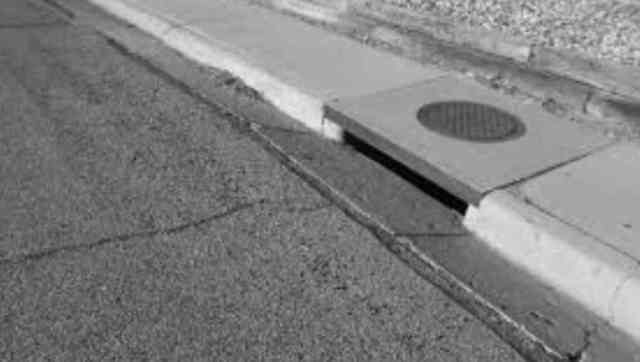A proper road drainage system is one of the most important parts of road design. It helps remove rainwater and surface runoff quickly. As a result, the road structure stays strong for a longer time. Without good drainage, even a well-built road can fail early. Water weakens the soil, damages the pavement, and causes cracks, potholes, and erosion.
In simple words, road drainage collects, carries, and disposes of surface and underground water. This helps maintain the strength and safety of the road.
This guide explains the types of road drainage systems, their importance, components, and best practices in easy and natural English.
Importance of a Road Drainage System
Water is the biggest threat to any road. When water stays on the surface, it creates skidding and safety issues. When it enters the pavement layers, it weakens the subgrade. As a result, cracks, ruts, and potholes begin to form.
A good drainage system:
prevents water from standing on the road
protects the subgrade and pavement layers
reduces erosion on shoulders and slopes
improves the life of the road
lowers maintenance costs
Therefore, good drainage leads to smoother, safer, and longer-lasting roads.

Types of Road Drainage System
Road drainage is mainly of two types:
Surface drainage system
Subsurface drainage system
Both systems are important. Together, they keep water away from the pavement.
1. Surface Drainage System
Surface drainage removes water from the road surface and the nearby area. The aim is to move the water away before it enters the pavement.
Main components of surface drainage
• Side Drains (Longitudinal Drains)
These drains run along both sides of the road. They collect rainwater and guide it forward. They can be lined with soil, stone, or concrete depending on the site.
• Cross Drains
These drains carry water from one side of the road to the other. Culverts, scuppers, and causeways are common examples.
• Kerb and Gutter Drains
Urban roads use kerbs and gutters. They collect water and send it to inlets or stormwater pipes.
• Catch Basins and Inlets
These structures collect water from the surface. They transfer the water into underground drainage pipes.
• Culverts
Culverts allow natural streams or stormwater to pass under the road. This prevents water from damaging the pavement.
Example:
In hilly regions, engineers often use V-shaped lined drains because they carry water quickly. In cities, covered drains and stormwater pipelines are more common.
2. Subsurface Drainage System
Subsurface drainage removes water that enters the pavement or the soil below. This water is dangerous because it weakens the road foundation.
Main components of subsurface drainage
• Longitudinal Drains
These perforated pipes run parallel to the road. They collect groundwater from the pavement layers.
• Cross Drains
These drains move subsurface water to the side drains.
• Filter Drains (French Drains)
A trench filled with stones and gravel helps collect underground water. A perforated pipe at the bottom moves this water away.
• Drainage Blankets
These are layers of free-draining material placed below the pavement. They stop water from collecting in weak soil areas.
Example:
In low-lying and waterlogged areas, subsurface drains help keep the pavement strong.
Combined Drainage System
Many modern roads use both surface and subsurface drainage. This is called a combined drainage system. It offers better protection. For example, highways in high-rainfall regions use kerb drains at the top and perforated pipes below.
Design Considerations for Road Drainage
When engineers design a road drainage system, they consider several important points:
Topography – the slope and shape of the land
Rainfall intensity – the expected amount of water
Soil type – how fast water can pass through the ground
Traffic load – the road must remain strong even in wet seasons
Environmental impact – to prevent erosion or waterlogging nearby
A correct slope is essential. Without a proper gradient, water will stagnate and damage the pavement.
Maintenance of Road Drainage System
Even the best drainage system needs regular care. Without maintenance, drains get blocked, and the road starts to fail. Therefore, proper maintenance is necessary.
Regular maintenance includes:
clearing drains, culverts, and basins
removing plants, debris, and sediment
repairing broken linings or pipes
inspecting drains after heavy rainfall
Good maintenance prevents bigger problems and reduces future repair costs.
IS Codes and IRC Guidelines
In India, design and maintenance follow several codes:
IRC: SP: 50-2013 – Urban Drainage Guidelines
IRC: SP: 42-2014 – Road Drainage Guidelines
IS 3370 – Concrete drainage structures
These codes ensure safe, strong, and durable drainage designs.
Conclusion 🎯
A well-designed road drainage system keeps the road dry, safe, and long-lasting. Whether the road is small or large, surface and subsurface drainage are both essential. With correct design, good materials, and regular maintenance, roads can survive heavy rains and remain strong for many years.
FAQs
Q1. What is a road drainage system?
It is a system that removes surface and underground water from the road.
Q2. Why is road drainage important?
It prevents waterlogging, erosion, and damage to the pavement.
Q3. What are the two main types of road drainage?
Surface drainage and subsurface drainage.
Q4. Which structures are commonly used?
Side drains, culverts, kerb drains, catch basins, and filter drains.
Q5. How often should drains be cleaned?
They should be cleaned before and after the rainy season or whenever blockage appears.
